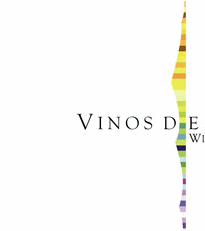Oceania: Oceania Peple Profile
2012/08/15
Oceania Peple Profile
The demographic table below shows the subregions and countries of Oceania as broadly categorised according to the usual geopolitical definition of Oceania.The information shown follows sources in cross-referenced articles; where sources differ, provisos have been clearly indicated. These territories and regions are subject to various additional categorisations, of course, depending on the source and purpose of each description.
- New Zealand forms the south-western corner of the Polynesian Triangle. Its indigenous Māori constitute one of the major cultures of Polynesia. It is also, however, considered part of Australasia.
- Hawaii is the northern corner of the Polynesian Triangle and is generally included in Oceania, though politically it is part of the United States. The Hawaiian language is a Polynesian member of the Oceanic language family, and Hawaiian culture is one of the major cultures of Polynesia.
- The US territories in the North Pacific are generally considered part of Oceania.
- Rapa Nui, or Easter Island, is the eastern corner of the Polynesian triangle. A Polynesian island in the eastern Pacific Ocean and part of the territory of Chile, it is generally included in Oceania, in which case the most easterly place in Polynesia and Oceania is its dependency Isla Salas y Gómez 415 km to the East.
- Australia is sometimes not included in Oceania. Terms such as Pacific Islands or South Sea Islands might be used to describe Oceania without Australia (and New Zealand). The term "Australasia" invariably includes Australia, and usually includes New Zealand, Papua New Guinea, and Island Melanesia. The term derives from austral "of the south" and Asia, meaning "south of Asia".
- Although Christmas Island and the Cocos (Keeling) Islands belong to the Commonwealth of Australia, they are nearer Indonesia than the Australian mainland, and are commonly associated with Asia instead of Oceania.
- Amateur radio follows the geographic rather than geopolitical boundaries of Oceania. The Worked All Continents award includes all of Indonesia and the Philippines in Oceania, though it places Easter Island with Chile and makes some other minor changes.
- In its widest sense, the term may embrace the entire insular region between Asia and the Americas, thereby including other islands in the Pacific Rim such as the Ryukyu, Kuril and Aleutian islands, the Japanese Archipelago and Taiwan
Religion
The predominant religion in Oceania is Christianity. Traditional religions are often animist and prevalent among traditional tribes is the belief in evil spirits (masalai in Tok Pisin), which are blamed for "poisoning" people, causing calamity and death. In recent Australian and New Zealand censuses, large proportions of the population say they belong to "No religion" (which includes humanism, atheism, agnosticism, and rationalism). In Tonga, everyday life is heavily influenced by Polynesian traditions and especially by the Christian faith. The Bahá'í House of Worship in Tiapapata, Samoa is one of seven designations administered in the Baha'i faith.
- Oceania News
-
- WORLD: Tuition fees row: education expert warns over graduate earnings
- WORLD: UN report attacks austerity budgets for growing inequality
- FRANCE: Aluminium-Lithium Alloys Fight Back
- AUSTRALIA: Pacifica Bauxite Identifies Potential High-Grade Bauxite Outcroppings in Solomon Islands
- AUSTRALIA: Queensland Bauxite Gains State Approval of Mineral Development Work Program
- AFGHANISTAN: UNWTO: International tourism – strongest half-year results since 2010
- Trending Articles
-
- CHINA: China welcomes Guinea to take part in Belt and Road Initiative
- UNITED STATES: Spotify, Hulu target students with discounted bundle
- CAMEROON: Poor End of Year Results for Cameroon Students
- AUSTRALIA: Queensland Bauxite Gains State Approval of Mineral Development Work Program
- CHINA: Chinese-supported infrastructure projects change Zambia's landscape
- UGANDA: Ugandan Govt Starts Verifying International Academy Teachers









